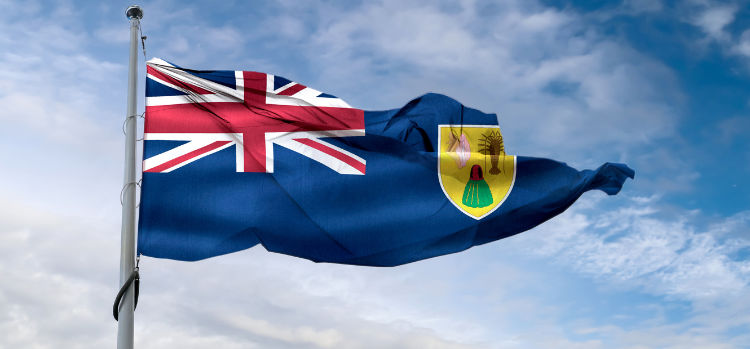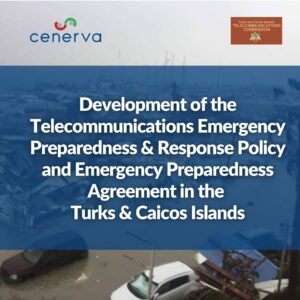In Case of Emergency … The Importance of Having Disaster Management and Emergency Plans for Telecoms Networks and Services
National emergencies can take many forms and frequently happen with little warning.
Communication technologies are essential in disaster management and risk reduction, providing the timely flow of information to facilitate decision-making, as well as coordination of recovery and response efforts during emergencies.
Yet, at the very time when these communications are so crucial, the telecoms infrastructure is also frequently subject to damage. Having solid plans to manage the resilience of telecommunications infrastructure and services in emergencies and disasters is essential to begin recovery as quickly and efficiently as possible.
Disaster Management Planning
As defined by the ITU, there are four phases of disaster management: mitigation, preparedness, response, and recovery.
Emergency and disaster mitigation plans should identify the obligations that apply across these four phases.
Coordination across all levels of government, private sector and humanitarian organisations is essential for a successful response to potential disasters. However, engaging all parties in planning and reaching agreement on resourcing and cooperation can be a challenging part of preparing for emergency response. It can be both politically and commercially sensitive to get these organisations to co-operate effectively.
To support the provision of a timely and effective response during any disaster or emergency, the ITU recommends that countries develop and implement national plans and strategies that allow the best use of information and communication technology to increase resilience and enable fast, coordinated action should disaster strike.

Case Study: Turks and Caicos Islands
The 2017 Atlantic hurricane season was highly destructive and the costliest on record, with 17 named storms, ten hurricanes, and six major hurricanes. It resulted in considerable economic damage, devastation, and loss of life.
The Turks and Caicos Islands were one of the many areas in the Caribbean affected by these hurricanes. They were particularly impacted by the two Category 5 hurricanes, Irma and Maria, which hit the region in rapid succession.
The Islands experienced massive damage to the telecommunications infrastructure, causing severe disruption to services, resulting in the loss of communications connection between the Islands and substantial impact on the mobile network, with restoration taking up to ten days.
Loss of communications during the disaster impacted the rescue and recovery efforts, leaving the government unable to communicate with citizens and lacking coordination of emergency services.
A robust plan to recover communications is essential and often requires industry-wide cooperation. To address this, the Turks and Caicos Islands Regulator has developed a Telecommunications Emergency Preparedness and Response Policy (TEPRP) after recognising a need for a better coordinated and cooperative response in an emergency.
Developed with the consultancy support of Cenerva, the policy lays out new obligations on telecoms network operators, designed to facilitate a coordinated response in emergency situations and support the continuity of communications.
The TEPRP identifies obligations that apply across the four phases of disasters defined by the ITU: mitigation, preparedness, response, and recovery.
The Commission and Cenerva worked with key stakeholders to create the new policy to ensure telecoms operators have plans in place for disaster recovery, intended to keep communications networks operational. This includes requirements for backup facilities which can be deployed quickly and support for key government and emergency communications channels.
A critical element of this TEPRP is establishing an agreement between operators, allowing for the shared use of infrastructure to connect emergency calls and coordinate disaster response and humanitarian relief efforts.
James Wild, a managing partner at Cenerva, comments:
“In an emergency, having a robust plan for the recovery of communications is essential and requires industry-wide cooperation amongst parties.
“Therefore, a critical element of developing a TEPRP is establishing an agreement between operators, allowing for the shared use of infrastructure to connect emergency calls and coordinate disaster response and humanitarian relief efforts.
“In working with clients around the world, we have been able to bring both expertise and share international best practices. In addition, through our status as an independent and impartial advisor, we can communicate with and assist in coordinating various parties, which are frequently direct rivals.”
About Cenerva
Cenerva is a world-leading regulatory policy consultancy, providing expert advice and support to help clients navigate the complex challenges of today’s digital economy.
It has a depth of experience working with Small Island Developing States. Its team has completed projects in many Caribbean jurisdictions, including Trinidad, Haiti, Jamaica, Barbados, Bahamas, Turks & Caicos Islands, and St Lucia. Further afield, they have worked in Mauritius, Jersey, Guernsey, Isle of Man and almost all the Pacific islands.
International 5G News Service
Keep up to date with the latest news from around the world relating to 5G developments. Get it delivered directly to your inbox by subscribing to our email service.






